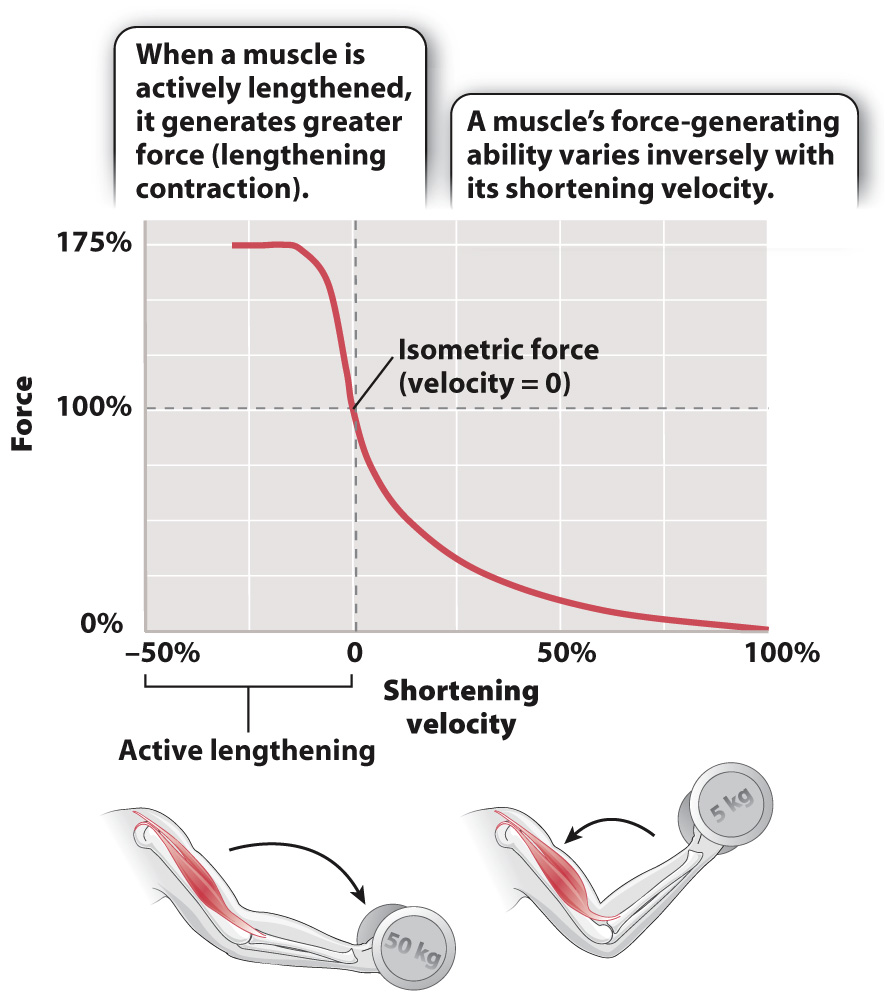Muscle force and shortening velocity are inversely related.
In experiments carried out in the 1930s, A. V. Hill (who won the 1922 Nobel Prize in Physiology or Medicine for his work on muscle energy use) observed that a muscle shortens fastest when producing low forces (Fig. 37.10). To produce larger forces, the muscle must shorten at progressively slower velocities. For example, your arm moves faster when you throw a light ball than when you throw a heavy one. The reason is that the faster a muscle fiber shortens, the fewer cross-

The term “muscle contraction” suggests that muscles shorten when stimulated to generate force, but in fact muscles may also exert force and remain a uniform length or even be lengthened. Consequently, the term “contraction” needs to be broadened beyond its familiar reference to muscle shortening to include those instances when a muscle exerts force while remaining the same length or being actively stretched.
When a muscle contracts but cannot shorten (for example, when you carry a heavy bucket of water), the muscle’s shortening velocity is zero (Fig. 37.10), and it generates an isometric force (iso-
Muscles can also be stretched when the external load against which they contract exceeds the force the muscle produces. This action is known as an active lengthening contraction. During a lengthening contraction, the muscle generates more force (up to 75% more, Fig. 37.10) than when it remains isometric or shortens. This kind of contraction occurs when you lower a box from a shelf and your biceps muscle lengthens as it exerts force, or when your calf and quadriceps muscles are stretched to support your body in landing from a jump. It also happens during every stride you take during a run as your leg joints flex when a leg contacts the ground, stretching contracting leg muscles. Active muscle lengthening reduces the muscle’s energy consumption because fewer fibers are recruited to generate a given level of force.
Injury can result if a muscle is stretched too rapidly or repetitively. Rapid and repetitive stretching often occurs during prolonged downhill hiking, causing muscle damage and soreness, particularly in the quadriceps muscles in the front of the thigh. Suitable training and warm-